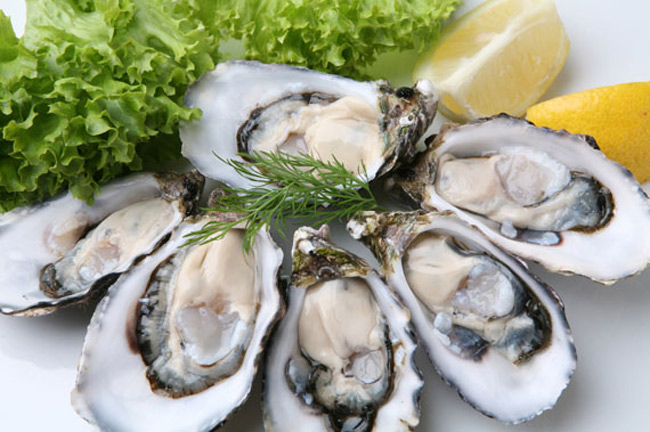
A research team led by a scientist at the Department of Energy’s Lawrence Berkeley National Laboratory (Berkeley Lab) and at the University of California, Berkeley, has found that copper plays a key role in metabolizing fat.
Previous studies have proved that copper is needed to form red blood cells, absorb iron, develop connective tissue and support the immune system. Eating copper-rich food like leafy greens, mushrooms, seeds, nuts, beans, oysters and other shellfish, not only prevents premature ageing and graying of hair, it also boosts fat burning in the body.
According to the Food and Nutrition Board of the Institute of Medicine, an adult’s estimated average dietary requirement for copper is about 700 micrograms per day. The Food and Nutrition Board also found that only 25 percent of the U.S. population gets enough copper daily.
Copper Role
Copper is an endogenous regulator of lipolysis, the breakdown of fat involving hydrolysis of triglycerides into glycerol and free fatty acids, which is an essential process in maintaining body weight and energy stores.
Using a mouse model of genetic copper misregulation, in combination with pharmacological alterations in copper status and imaging studies in a 3T3-L1 white adipocyte model, we found that copper regulates lipolysis at the level of the second messenger, cyclic AMP (cAMP), by altering the activity of the cAMP-degrading phosphodiesterase PDE3B. Biochemical studies of the copper-PDE3B interaction establish copper-dependent inhibition of enzyme activity and identify a key conserved cysteine residue in a PDE3-specific loop that is essential for the observed copper-dependent lipolytic phenotype.
The researchers conducted cell culture analyses to clarify the mechanism by which copper influences lipolysis. The researchers used inductively coupled plasma mass spectroscopy (ICP-MS) equipment at Berkeley Lab to measure levels of copper in fat tissue.
“When copper binds phosphodiesterase, it’s like a brake on a brake,” said Chang, leader of the study and a UC Berkeley professor of chemistry and a Howard Hughes Medical Institute investigator. “That’s why copper has a positive correlation with lipolysis.”
Foods that Boost Copper
- The richest dietary source of copper is beef liver, with 4,049 micrograms in each ounce.
- Copper is also abundant in many types of seafood. One medium oyster gives you 670 micrograms, while 3 ounces of clams provide 585 micrograms. A 3-ounce serving of cooked crab meat has 624 micrograms of copper.
- Some types of beans, nuts and legumes are particularly high in copper, making them a good source of that mineral for vegetarians. Eaten in 1-ounce servings, cashews provide 629 micrograms, sunflower seeds have 519, hazelnuts give you 496, almonds contain 332 and cooked lentils provide 497. Two tablespoons of chunky peanut butter have 185 micrograms of copper, as well, so it is not difficult to get an adequate amount of copper if you do not eat meat.
- Fruits and vegetables are generally low in copper, but you can get some of it from fruits and vegetables. A cup of sun-dried tomatoes provides you with 768 micrograms of copper. A cup of raw, sliced mushrooms gives you 344 micrograms and a large baked potato has 320. Sweet potatoes, bananas, grapes, and avocados each contain about 10 percent of your recommended daily intake of copper and can be beneficial additions to your diet.
- If you like chocolate, a small amount each day can help you get more copper in your diet. An ounce of dark chocolate, with 70 to 85 percent cacao contains about 500 micrograms of copper, giving you more than half your recommended daily intake.
- Few grains and cereals also contain copper. Enriched cereals are often fortified with copper. A cup of enriched rice contains about 100 micrograms of copper and a cup of bran cereal has about 257 micrograms.
- A high intake of dietary copper can cause a zinc deficiency, and vice versa. Women should get 11 milligrams of zinc each day. An adequate zinc intake promotes healthy cell division, ensures a proper sense of smell and taste and benefits your immune system. Many zinc supplements contain copper to help maintain a balance of these nutrients. To do so with food, add high-zinc foods to your diet, including oysters, beef shank, crab meat, beef shoulder, fortified cereals, chicken legs or lobster.
Note:
A deficiency in copper can lead to osteoporosis, joint pain, lowered immunity, and since copper is essential for the absorption of iron, anemia. Conversely, over-consumption of copper will lead to cramps, diarrhea, and vomiting in the short term, and can lead to depression, schizophrenia, hypertension, senility, and insomnia in the long term.

